You Can Make History Young Again Elton John
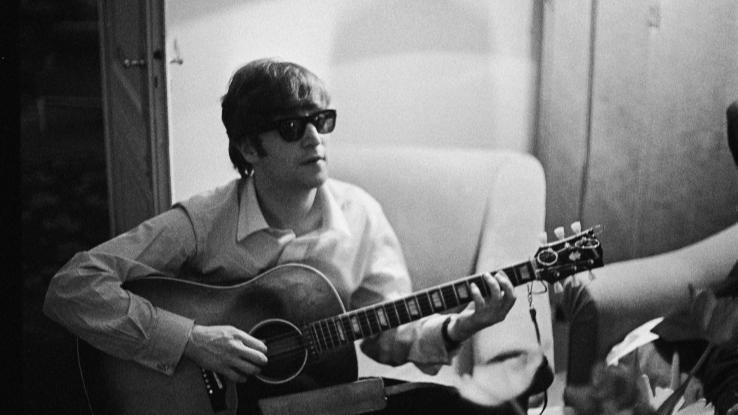
As a member of one of the most influential and successful rock bands of all time, John Lennon is widely regarded as a musical genius. The Beatles were constantly in the public eye, but Lennon himself was a bit of an enigma. Capable of enormous acts of kindness, he was equally little and vicious at times.
His life and career concluded far likewise soon, but he left the world with a host of written and recorded musical masterpieces. Let's take a expect at a few things you might not know about this famous Beatle.
A Career Launched in a Weird Music Genre
As a teenager in Liverpool, Lennon was a singer and guitarist in a skiffle band chosen the Quarrymen. Skiffle was a musical craze that had British teenagers dancing in the 1950s. Derived from jazz and swing, the genre is largely forgotten today, but it was huge in England at one time, thanks to skiffle star Lonnie Donegan.
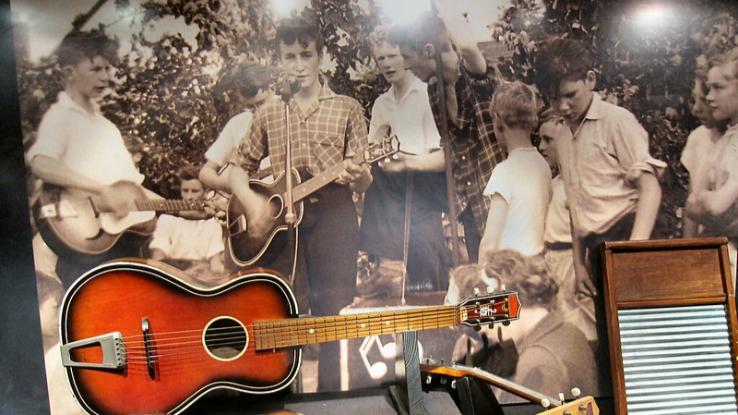
The ring, consisting of students at Quarry Bank High School, took its proper noun from a line in the school song. The fifteen-year-sometime Lennon was the lead vocalizer by default. A young Paul McCartney attended the band's second performance and eventually joined the group, followed past George Harrison a yr afterward.
Even earlier the Beatles officially called information technology quits, Lennon and Yoko Ono were quite prolific musically. The duo recorded more than than a dozen records in a four-year catamenia that started in 1968. Lennon'southward early on solo records produced several international tiptop 10 hits, including "Happy Xmas (War Is Over)," "Give Peace a Take chances," "Instant Karma!" and "Imagine."
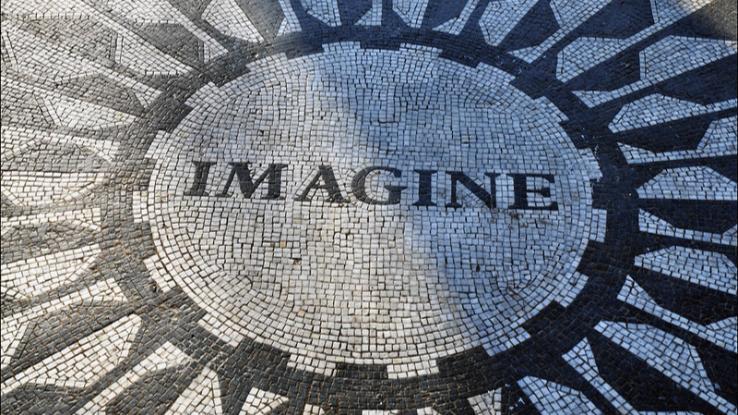
Ever the rebel — and always fix to push musical boundaries and offend sensibilities — John worked with Yoko to make a trio of avant-garde records that confused Beatles' fans and confounded critics. Several famous musicians lent their talents to these recordings.
Then Much More Than a Rhythm Guitarist
Lennon was by and large known as a rhythm guitarist, but his female parent, Julia, too taught him to play the banjo when he was a teenager. He learned to play the harmonica from a bus commuter while he was traveling to visit a cousin in Scotland, and the harmonica was featured heavily on early Beatles' recordings.
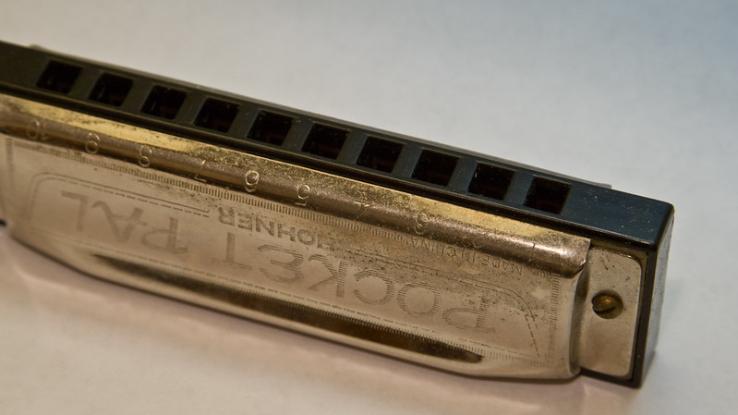
Lennon played a six-string bass guitar on several Beatles' songs and played a Mellotron keyboard on "Strawberry Fields Forever." He wrote many songs on the piano, including one of his near-loved hits, "Imagine." The McCartney-Lennon song "I Desire to Concord Your Paw" resulted from a jam the two had on a pianoforte.
Taking a Shot at a Old Bandmate in Vocal
Lennon wrote a song that appeared on his 1971 solo album Imagine that took a directly jab at his former friend, collaborator and bandmate, Paul McCartney. The song "How Do You Sleep" features the line, "The only thing y'all done was yesterday. And since yous're gone, yous're merely another day."
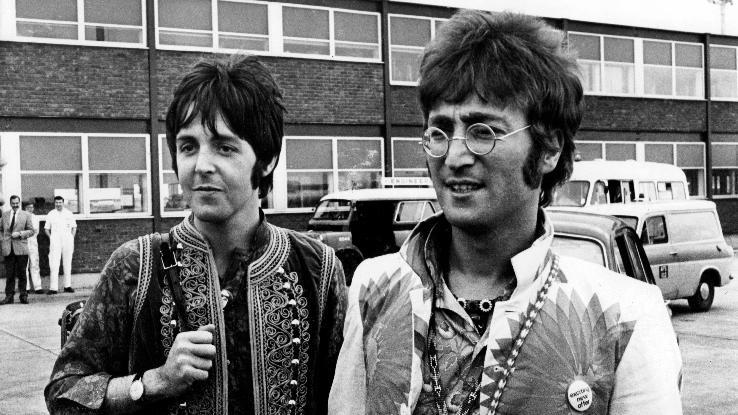
The sting was made greater by George Harrison playing guitar on the song. Some say Lennon was disappointed in his former friend'due south watered-down post-Beatles output, although it was more likely in retaliation to McCartney's dig at John and Yoko on his anthology Ram that soured things.
Tossed from a Nightclub for Bad Beliefs
In 1973, while Lennon was recording his Mind Games album, he and Yoko agreed to a separation that ended upward lasting 18 months. Lennon lived in Los Angeles but also spent time in New York City. He drank heavily and spent a lot of time with a adult female named May Pang, who had worked as a personal assistant to John and Yoko.
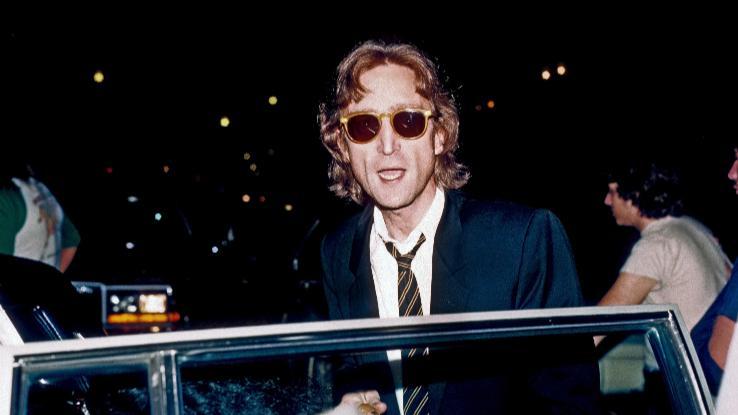
During his time in exile from his matrimony, John and singer-songwriter Harry Nilsson partied hard. The pair'south drunken escapades made headlines and got them kicked out of The Troubadour nightclub for heckling the Smothers Brothers comedy act.
Collaborations with Some of the Biggest Names in Music
Throughout his post-Beatles career, Lennon collaborated with some pretty big names in pop music. In improver to playing with ii other Beatles — Harrison and Starr — on recordings, he worked with stars like Elton John, who provided backing vocals and played piano on "Whatever Gets Yous Thru the Night."
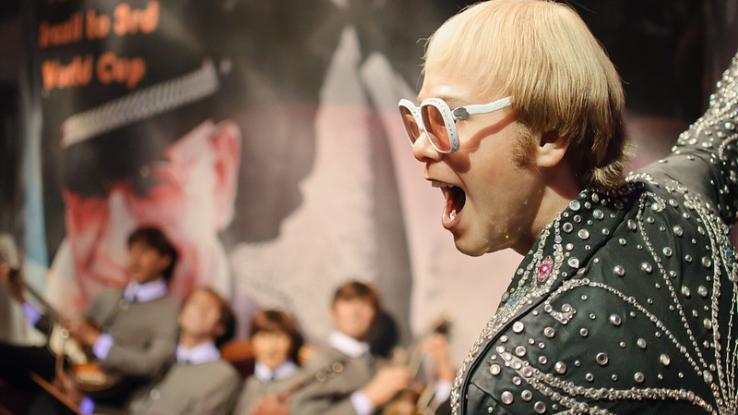
Lennon as well co-wrote "Fame" with David Bowie. The song was Bowie's commencement number one hit in the U.Southward. Fifty-fifty amend, Lennon also played guitar and sang backup vocals on the vocal, credited nether the pseudonym Dr. Winston O'Boogie.
Calumniating to More Than Just Women
Rumors of Lennon's abusive tendencies toward women followed him throughout his life. In his song "Jealous Guy," he seemed to acknowledge his past beliefs, blaming it on his insecurities. Notwithstanding, Lennon didn't actually discriminate when it came to bad treatment. His biting wit and sarcasm left many victims bleeding throughout his career, including Paul McCartney.
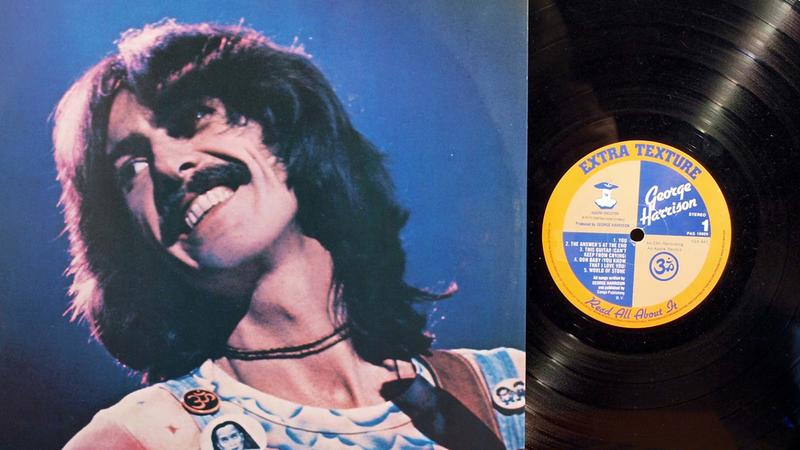
George Harrison played guitar on some of Lennon'southward albums and recordings. In return, Lennon agreed to play at a concert Harrison was organizing in 1971 called Concert for Bangladesh. However, Harrison'south refusal to let Yoko Ono perform prompted Lennon to pull out, reportedly after a very heated statement.
A Threat on Both Sides of the Atlantic
Like many musicians and actors in the tardily '60s and early on '70s, Lennon was a vocal critic of U.South. involvement in the Vietnam War. This resulted in President Richard Nixon'due south repeated attempts to take him deported back to England. Additionally, the FBI had well-nigh 300 pages of files on Lennon.
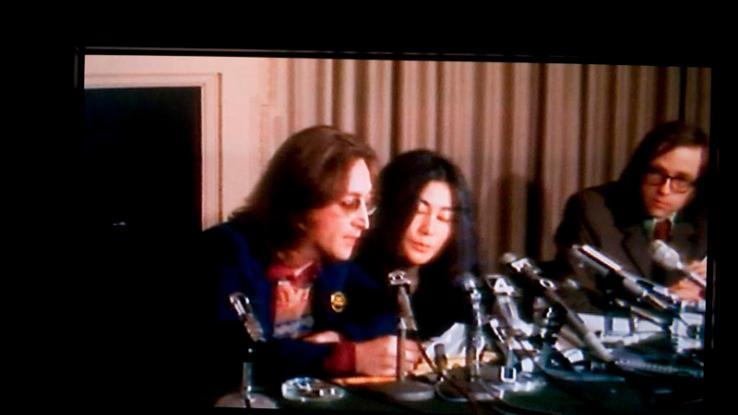
Some of the documents were released afterward his expiry through a Liberty of Data Human action request. They revealed that the British government also considered Lennon a threat. Other files included information on his daily activities, involvement in anti-war efforts, transcripts from TV shows he appeared on and information obtained from informants.
Imagine a Lennon Non Raised in England
John'south begetter, Alfred Lennon, was a merchant seaman who was away for much of John's life. He supported the family for a while by sending checks to John's mother, Julia. Alfred went AWOL when John was just four years old.
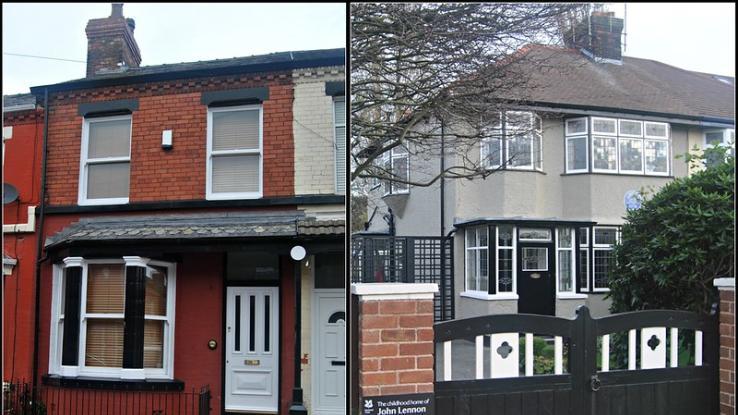
He returned six months later, gear up to assume his fatherly role, but past that indicate, Julia was pregnant with another man'due south baby. Julia'south sister somewhen causeless custody of John. At one point, Alfred planned to take John with him to New Zealand. They got as far every bit Blackpool before he was confronted by Julia and her new boyfriend.
Exploration of Other Creative Outlets
Lennon showed his creativity at an early age. His uncle encouraged him to write and draw, and he collected poems, stories and drawings in a notebook he titled the Daily Howl. His classmates have said that Lennon created the book to charm his friends.
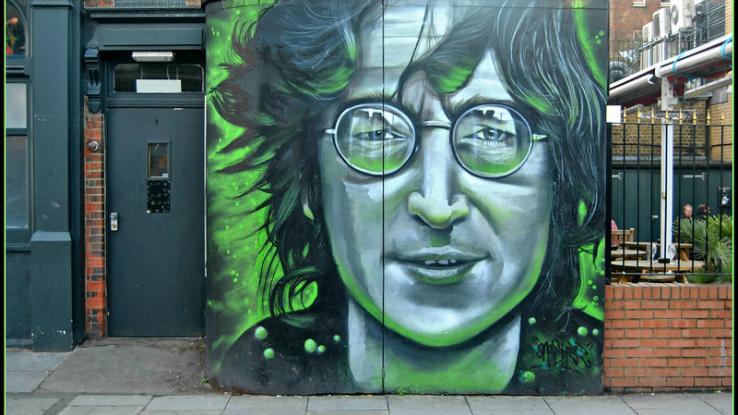
As an adult who had enjoyed monster success every bit a member of the Beatles, Lennon was encouraged to publish a book of his writings. His volume In His Own Write was released in 1964. Like to his high school work, it contained nonsensical stories and drawings. The post-obit twelvemonth, Lennon published a similar book titled A Spaniard in the Works.
A Ring Reunion 40 Years Later
The year 2009 saw a revival of Plastic Ono Band, formed by John and Yoko more than 40 years prior to that engagement. John and Yoko's son, Sean, was a member of the new version. The band released an album that yr titled Don't Stop Me!, followed by a full-length LP called Between My Head and the Sky.
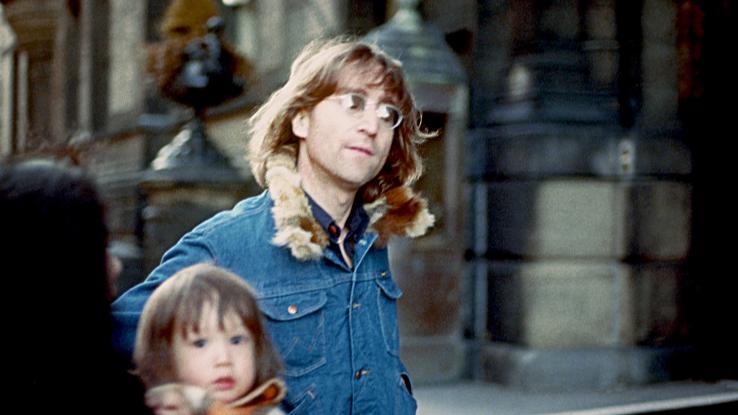
In 2010, the band played a concert with Eric Clapton, who played in a supergroup with John and Yoko called The Dirty Mac in the tardily 1960s. (Small-scale world, right?) The ring too collaborated with The Flaming Lips to release an album aptly titled The Flaming Lips with Yoko Ono/Plastic Ono Band.
The Son Who Inspired Three Huge Hits
Julian Lennon — John'southward more famous son with his kickoff married woman, Cynthia — is a songwriter and musician. When he was still a kid, he was actually the inspiration for 3 Beatles' songs.
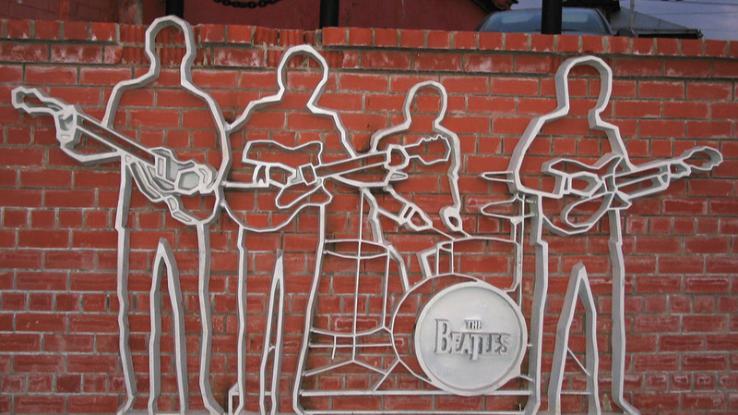
"Lucy in the Heaven with Diamonds" was allegedly the proper noun of a cartoon Julian drew in plant nursery schoolhouse. "Hey Jude" started as a lullaby of sorts that Paul McCartney sang to Julian to comfort him and get him to go to sleep. "Good Night" is a lullaby John wrote for Julian. The recorded version appeared on the "White Album," with Ringo Starr providing vocals and music provided past an orchestra.
I Spiked Cup of Coffee Changed Everything
It'due south no secret that Lennon and the balance of the Beatles experimented with drugs. They were introduced to marijuana by folk vocalist Bob Dylan, but John's first experience with the psychedelic drug LSD was not his choice.
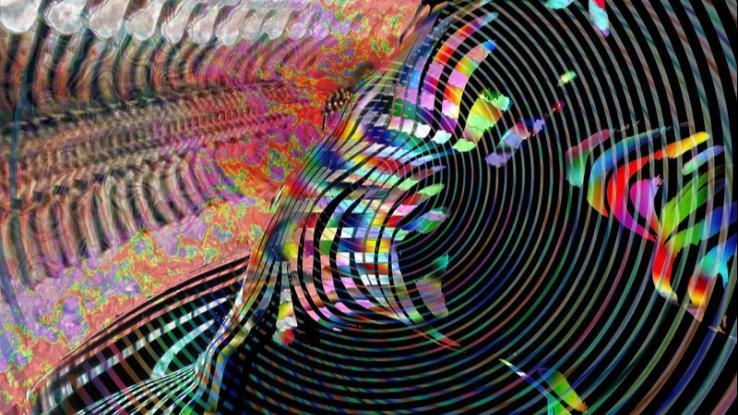
His first LSD trip occurred because someone dosed him without even telling him. During a nighttime of partying in London in the mid-1960s, dentist John Riley put the drug in John's coffee. This inverse the course of music forever, as the drug had a huge issue on the band's music going forward.
A License to Bulldoze a Little Chip Late
Lennon refused to wear spectacles for much of his adult life, which probably contributed to his reputation as a bad driver. He actually didn't learn to drive until much later than his Beatle counterparts. He was 24 years old when he got his license.
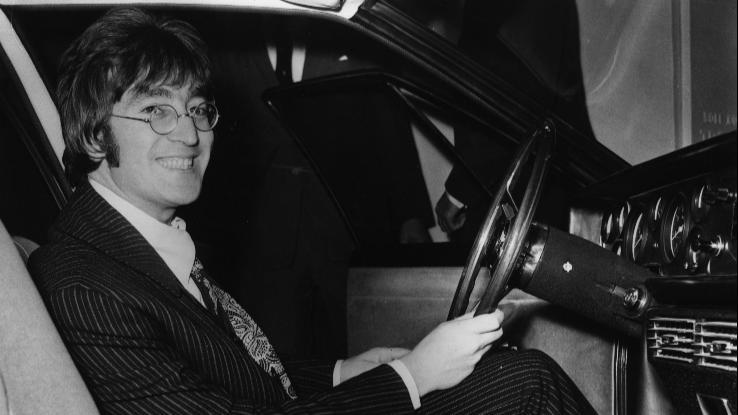
Lennon collection for less than five years. After crashing his Aston-Martin in 1969 on a trip to Scotland, Lennon gave up the driver'southward seat. Yoko, Julian and Yoko's girl, Kyoko, were passengers at the time. The wreckage of the motorcar was put on display on the grounds of John and Yoko's home in England.
Remember "Fan" Is Only Curt for "Fanatic"
Marking David Chapman wasn't just John Lennon's assassin — he was reportedly a fan who started as a huge Beatles fan. Thanks to a religious conversion and obvious mental affliction, Chapman felt compelled to kill his idol. He planned the murder for months in accelerate and carried it out on Dec eight, 1980.
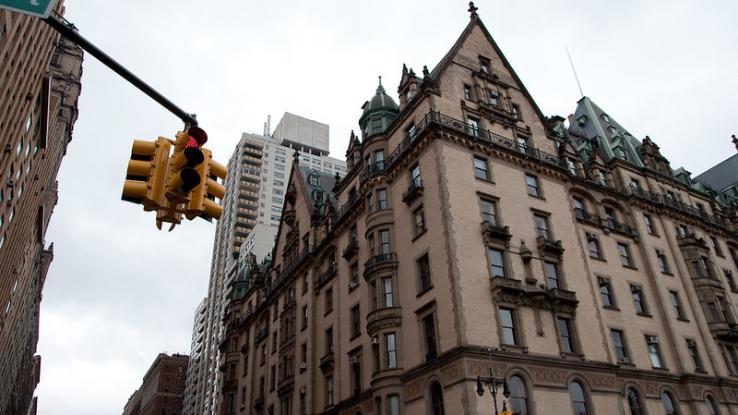
Lennon signed a copy of the Double Fantasy album for Chapman on the day of his murder. Chapman returned to The Dakota, where Lennon lived in New York City, and shot him 4 times in the dorsum. Lennon was pronounced expressionless after being rushed to Roosevelt Hospital in NYC.
No Simple Sit-in for John and Yoko
John and Yoko were ardent peace activists and two of the most visible protesters against the war in Vietnam. In 1969, the couple staged a bed-in for peace that lasted two weeks. The protests took place in hotels in Amsterdam in the netherlands and in Montreal, Canada.
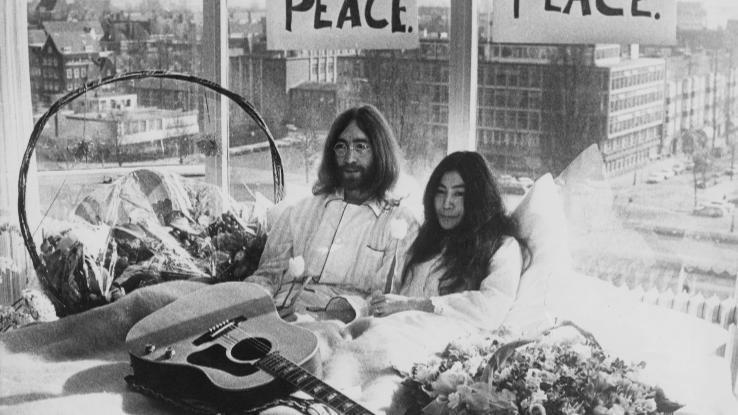
The idea was inspired by the existing concept of a demonstration, where protesters remained seated in protest until forcibly removed. Regime didn't try to physically remove the couple from their bed, but they notwithstanding received a lot of publicity and attending for their cause.
I Drug Too Many
The breakup of the Beatles may have had more to exercise with drugs than anything else. Throughout the tardily 1960s, the Beatles experimented with drugs, and they aren't shy about talking about the influence marijuana and LSD had on their music. Nevertheless, John and Yoko's apply of heroin did some real damage to their mental health and creative output.
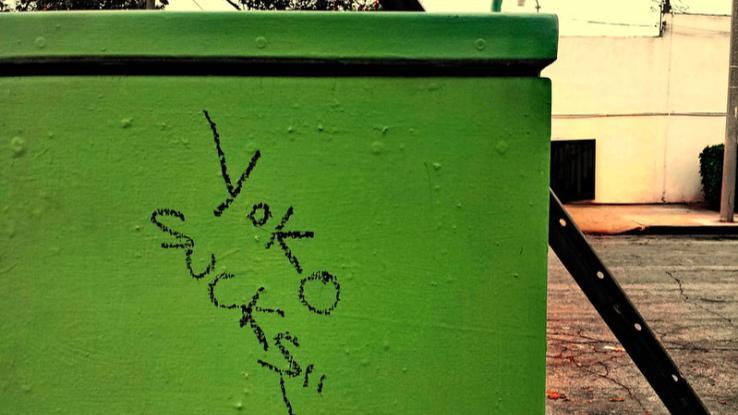
For one thing, heroin added to Lennon'due south volatile mood swings, which fabricated him fifty-fifty more hard. The pair quit the drug cold turkey, which resulted in the harrowing feel documented in Lennon's song of the same name.
An Astrological Prediction of the Shooting
John Lennon and Yoko Ono once hired a psychic to suggest them on various matters, including financial and business decisions. While they certainly could afford to pay for almost anything, whether they received sound advice that was worth the money is a matter of much argue.
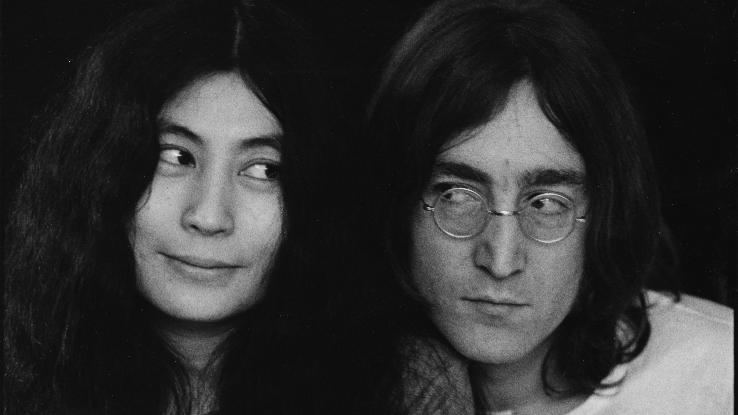
The couple was very spiritual and believed in astrology equally well. Allegedly, an astrologist once warned Lennon that he would exist shot on an island. This prophecy prompted John and Yoko to cancel a planned visit to the Greek islands in 1969. Eleven years later, John was killed on the island of Manhattan. Coincidence or prophecy?
The Less Traveled Path to Better Protein
The Beatles often seemed strangely connected, and they followed each other down various spiritual paths. This was true for private spiritualism equally well equally for experimentation with mind-altering drugs similar LSD. Ane path John didn't take, however, was that of vegetarianism.

George Harrison was the get-go to forsake animal flesh in 1965 for spiritual reasons. When Ringo Starr became a vegetarian, it was about his health. Paul McCartney was besides an gorging proponent of the vegetarian lifestyle. In fact, Paul's married woman, Linda, had her ain line of salubrious vegetarian food products at one bespeak. John remained a committed meat-eater to the end.
Moodiness That Could Turn to Violence in a Wink
John was prone to mood swings — some of them violent. Early in the Beatles career, he severely beat a disc jockey and friend of the band, Bob Wooler, because Wooler insinuated at a party that John was gay. Their manager, Brian Epstein, was gay and reportedly had a beat out on Lennon. Lennon allegedly took advantage of Epstein'due south feelings, but despite the rumors, in that location was never a relationship.
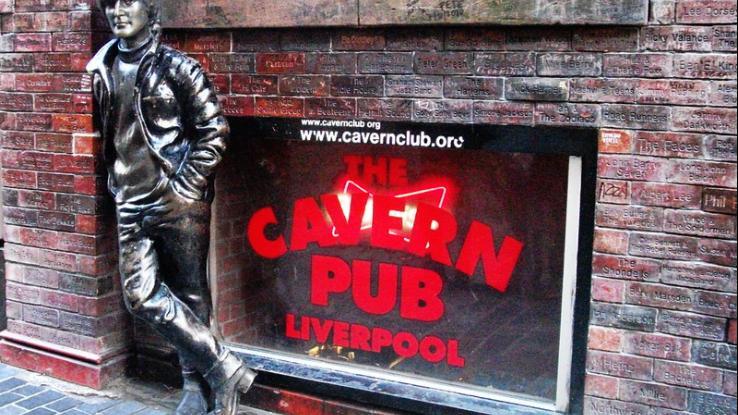
In a example of farthermost overreaction and homophobia, John beat up Wooler at his own 21st birthday political party. Fortunately, he realized he was about to kill his friend and regained control.
A Singer with Cocky-Esteem Bug
Although he was ane of the greatest singers and songwriters of all time, John hated the sound of his own vocalism. He was insecure in many means, and that insecurity extended to his voice talent. He allegedly once asked legendary producer George Martin (regarding his vocals), "Tin't you smother information technology with tomato ketchup or something?"
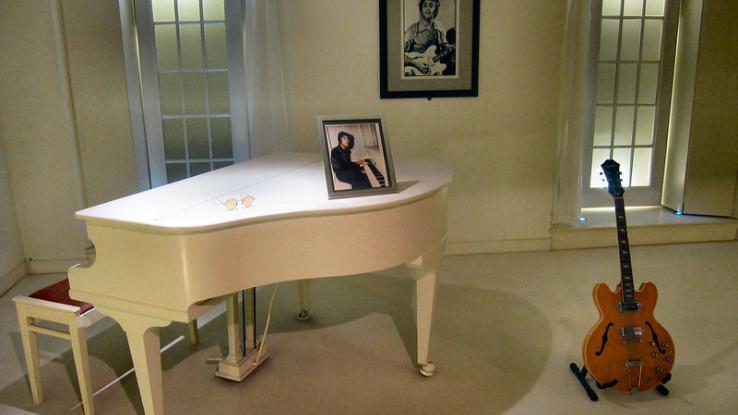
He was always looking for means to alter his voice on recordings. On the vocal "I Am the Walrus," he wanted his vocals to sound equally though they were being transmitted from the moon, much to his bandmates' distress down hither on Earth.
Not a Fan of Whatever of the Beatles' Albums
John Lennon's dislike of his own singing voice didn't stop at alive performances. He reportedly disliked all the Beatles' albums — all of them. He supposedly confided to producer George Martin that he wished he could re-record all the Beatles' records. It's not clear whether it was due to his well-documented insecurity, his perfectionist nature or simple humility (unlikely).
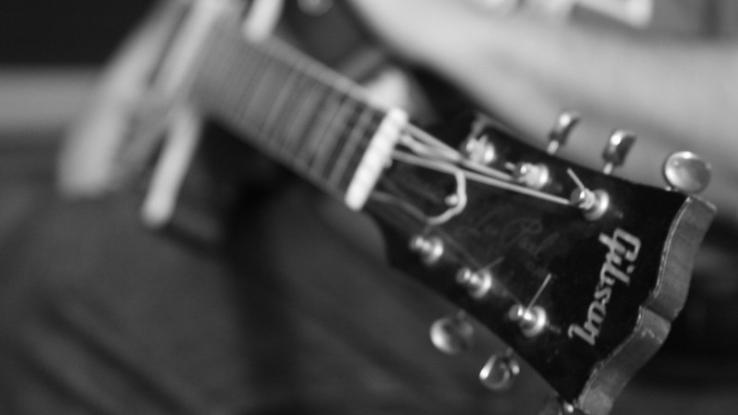
It's difficult to believe that Lennon could be then critical of his astonishing body of work. Millions of fans disagree that he sucks, simply the fact that he questioned his own talent made John relatable to many.
Going Out with a Whimper, Not a Bang
The last fourth dimension the legendary songwriting duo of Lennon and McCartney exchanged words was in 1976. Paul showed up at John'south apartment building in New York City, guitar in manus. He gave no advance warning of his arrival, and John reportedly turned his ex-bandmate away.
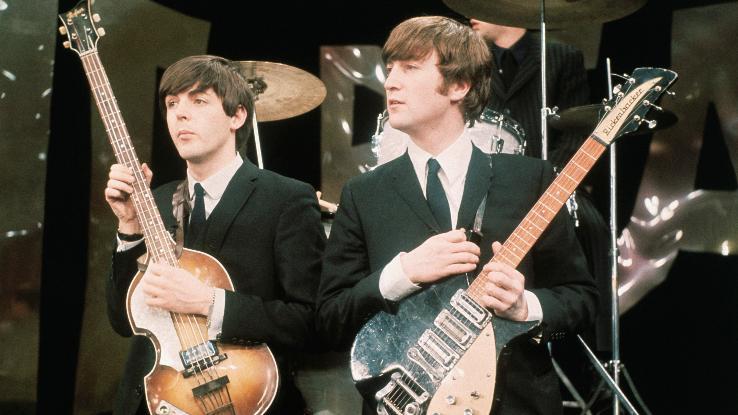
He claimed at the fourth dimension that Paul had gotten into the habit of just popping by, and he needed more advance find. Paul left NYC for Dallas the following day to prepare with Wings for another leg of their U.S. tour. The two stayed in touch until John's expiry but never met in person again.
The Lennon Ring You've Never Heard Of
John was in one case a member of the brusque-lived supergroup chosen The Muddied Mac. The name was a play on Fleetwood Mac, a hugely pop grouping in the U.K. in the 1960s (and future superstars in the U.S. in the 1970s). He assembled the band in 1968 to play "The Rolling Stones Rock and Roll Circus" Tv set special.
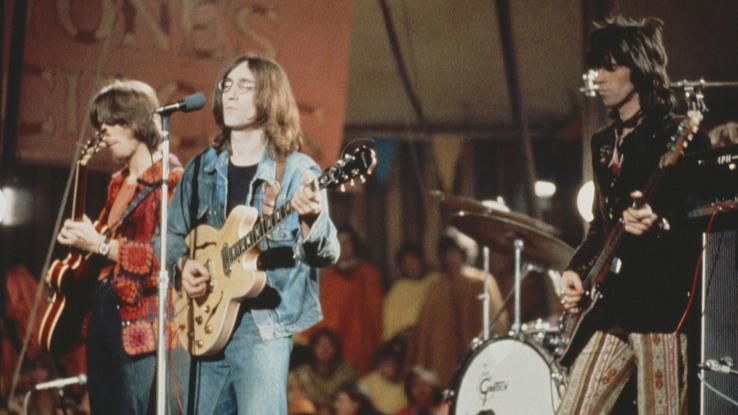
Members included Keith Richards of the Stones on bass, Mitch Mitchell of the Jimi Hendrix Experience on drums, Eric Clapton of Foam on pb guitar and himself on rhythm guitar and singing. He introduced the ring members during the prove, calling himself Winston Leg-Thigh.
Iconic Imagery That Always Comes to Mind
In terms of physical advent, John Lennon is probably best remembered for his wireframe "granny" glasses. He was nearsighted but reluctant to article of clothing glasses for most of his life. He was bandage in the part of Musketeer Gripweed in the 1967 British movie How I Won the War, and his character wore the signature glasses.
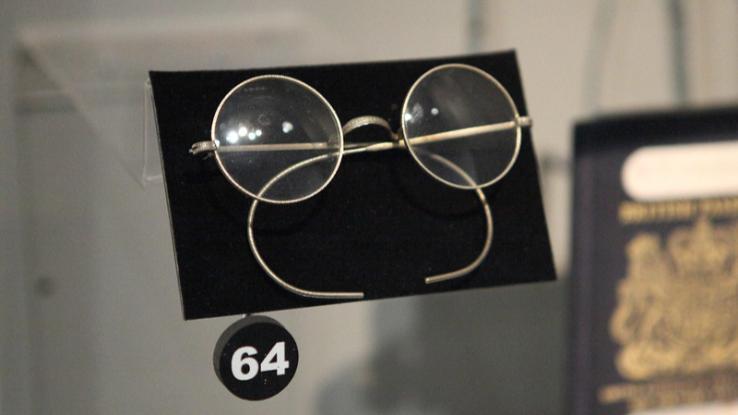
John continued to wear them, even after the movie wrapped. A claret-stained pair of his glasses appeared on the cover of Yoko's anthology Season of Glass. She also shared a photo of the spectacles on Twitter in 2013 to protest gun violence.
A Mundane Beginning to an Boggling Relationship
According to his own bookkeeping, John first met Yoko Ono on November 9, 1966, at an art bear witness held at the Indica Gallery in London. He said he was embarrassed to attend because of his fame every bit a Beatle, but that obviously didn't stop him.
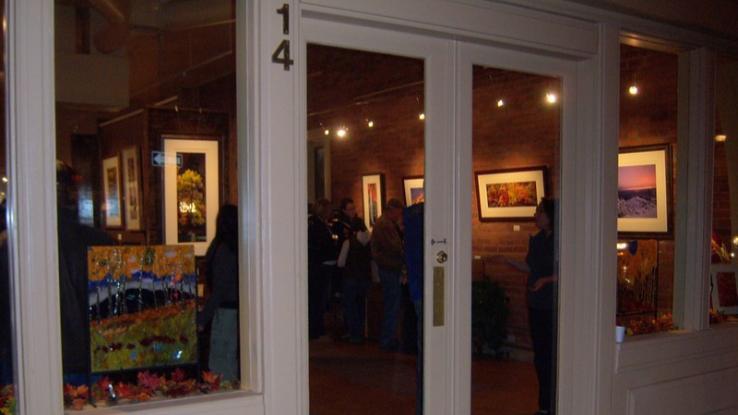
He claims he was won over past the gifted artist while viewing one of the pieces in the exhibit. To appreciate the piece, he had to climb upwards a ladder to view information technology with a magnifying glass. What was it? The word "aye" written in tiny letters on the ceiling.
Playing Children's Games on the Road
In add-on to Listen Games, John also reportedly enjoyed playing board games, Monopoly in particular. When the Beatles were together, he packed the popular real manor game for them to play on the road.
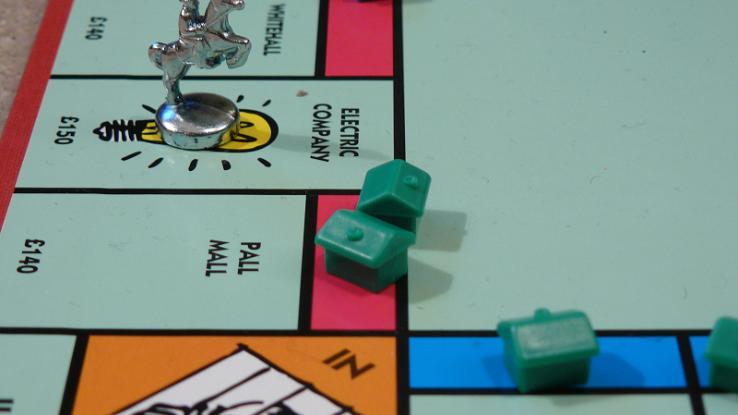
John coerced band members to play the game on planes and in hotel rooms and seemed to exist obsessed with buying the Boardwalk and Park Identify backdrop. Whether the game was simply a unproblematic diversion from life on the road or his obsession held some deeper meaning, we will never know. It remains an interesting fact about a very complex person.
A Stone 'n' Roll Bad Male child with a Religious Start
John Lennon had a well-earned reputation equally a rock 'n' roll bad boy. He worked difficult, played hard and was never really like the clean-cut prototype the early on version of the Beatles tried to project. Ironically, the insubordinate did get his offset in music equally a choir boy.
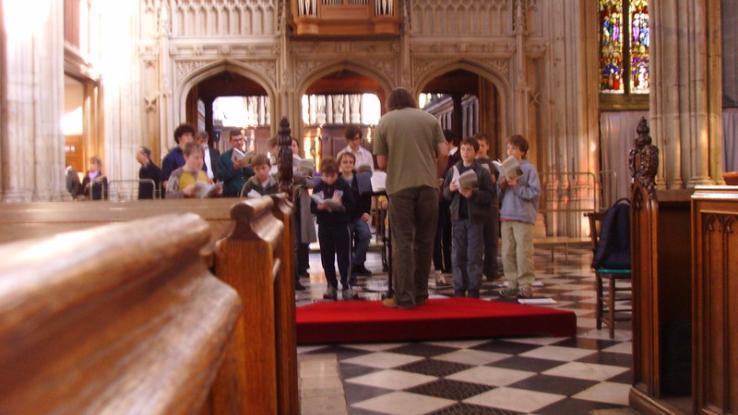
Not simply was he a choir male child at St. Peter's Church in Liverpool, England, just he was also a fellow member of the Allerton Male child Scout Troop. Despite these early affiliations, John spent much of his life in opposition to conformity and organized anything (religion, in particular), but he had to get-go somewhere.
A Near Miss on the Longed for Stage Reunion
During the outset flavor of Sat Nighttime Live, creator Lorne Michaels fabricated a plea on live television set for the Beatles to get back together on the show. He offered the relatively small corporeality of $3,000 for the Beatles to play iii songs on the show.
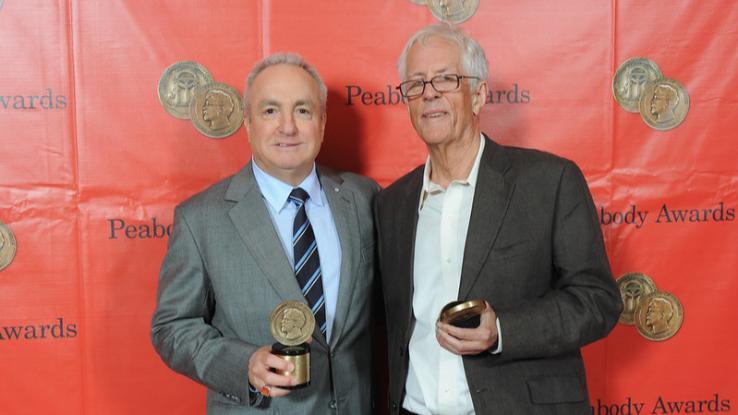
John and Paul happened to be hanging out together in NYC on that Saturday night in 1975, and they were tempted to take him upwardly on his offering. It would have just taken a short cab ride to achieve the studio and brand rock 'n' roll history, but they ultimately decided against information technology.
Posing for a Legend for a Final Farewell
John Lennon appeared on the comprehend of the starting time issue of Rolling Stone magazine in 1968. He continued to exist featured on the cover and inside the pages on a regular footing over the next thirteen years until his death.
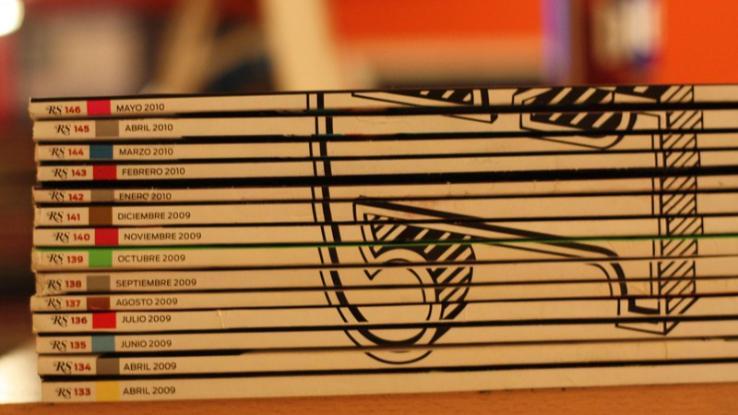
Photographer Annie Liebovitz photographed John for some other cover just hours before he was shot to death in front of his apartment building. She asked both John and Yoko to pose nude as they had years earlier when promoting their 2 Virgins album. Yoko declined but John accepted in what turned out to be the memorable cover of the January 22, 1981 issue.
Source: https://www.ask.com/entertainment/interesting-facts-john-lennon?utm_content=params%3Ao%3D740004%26ad%3DdirN%26qo%3DserpIndex
Belum ada Komentar untuk "You Can Make History Young Again Elton John"
Posting Komentar